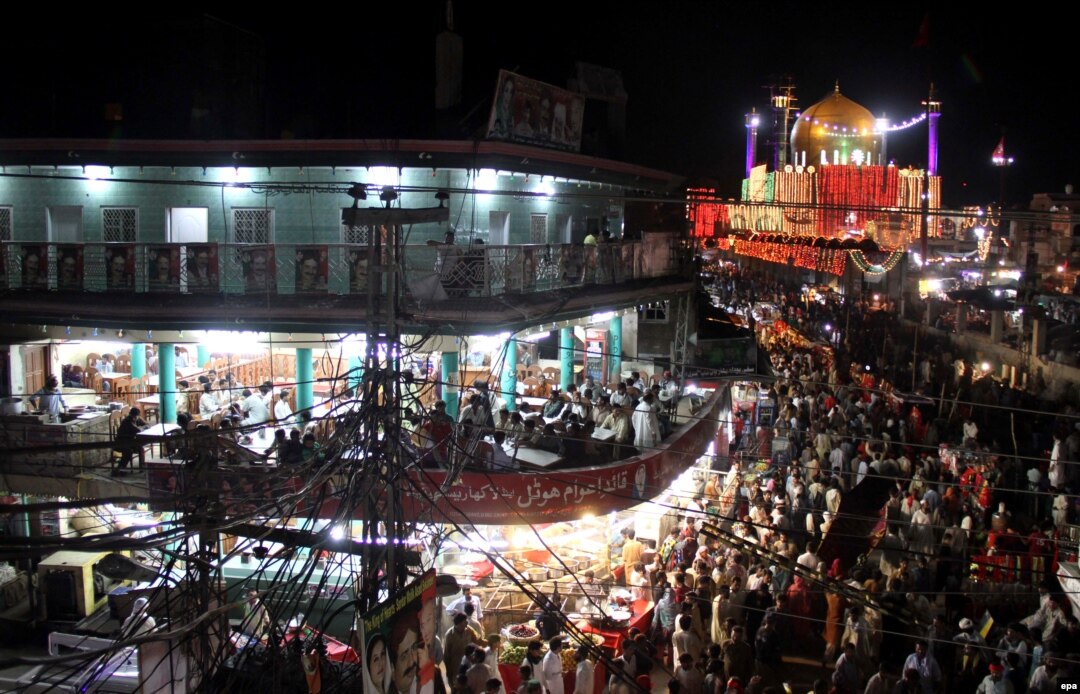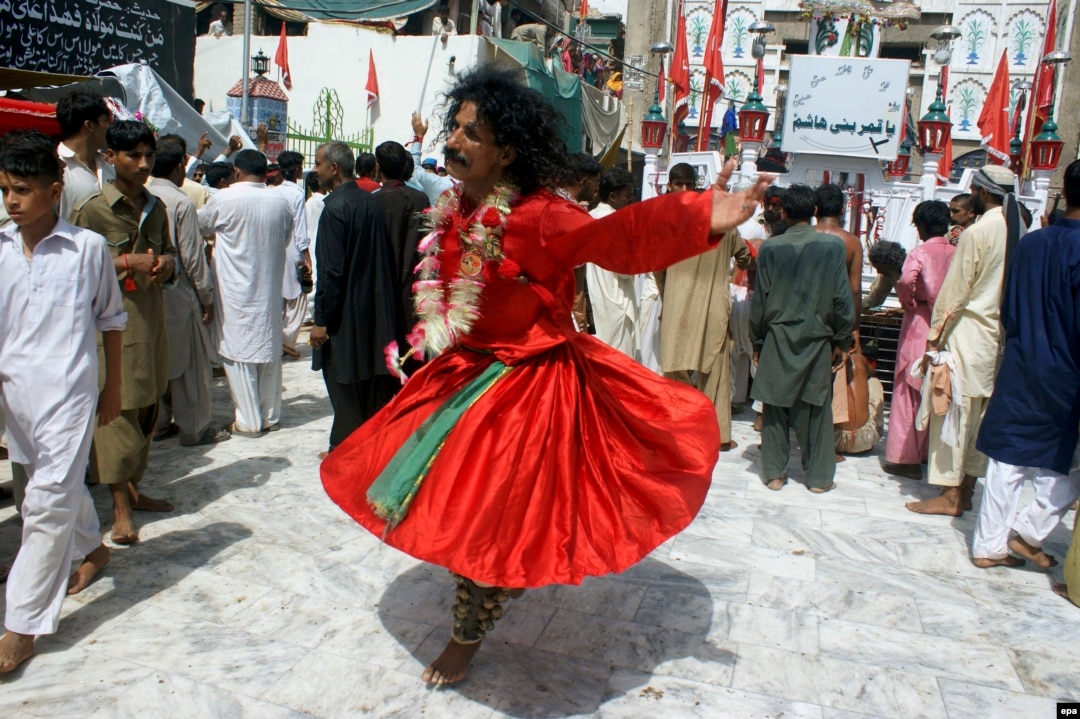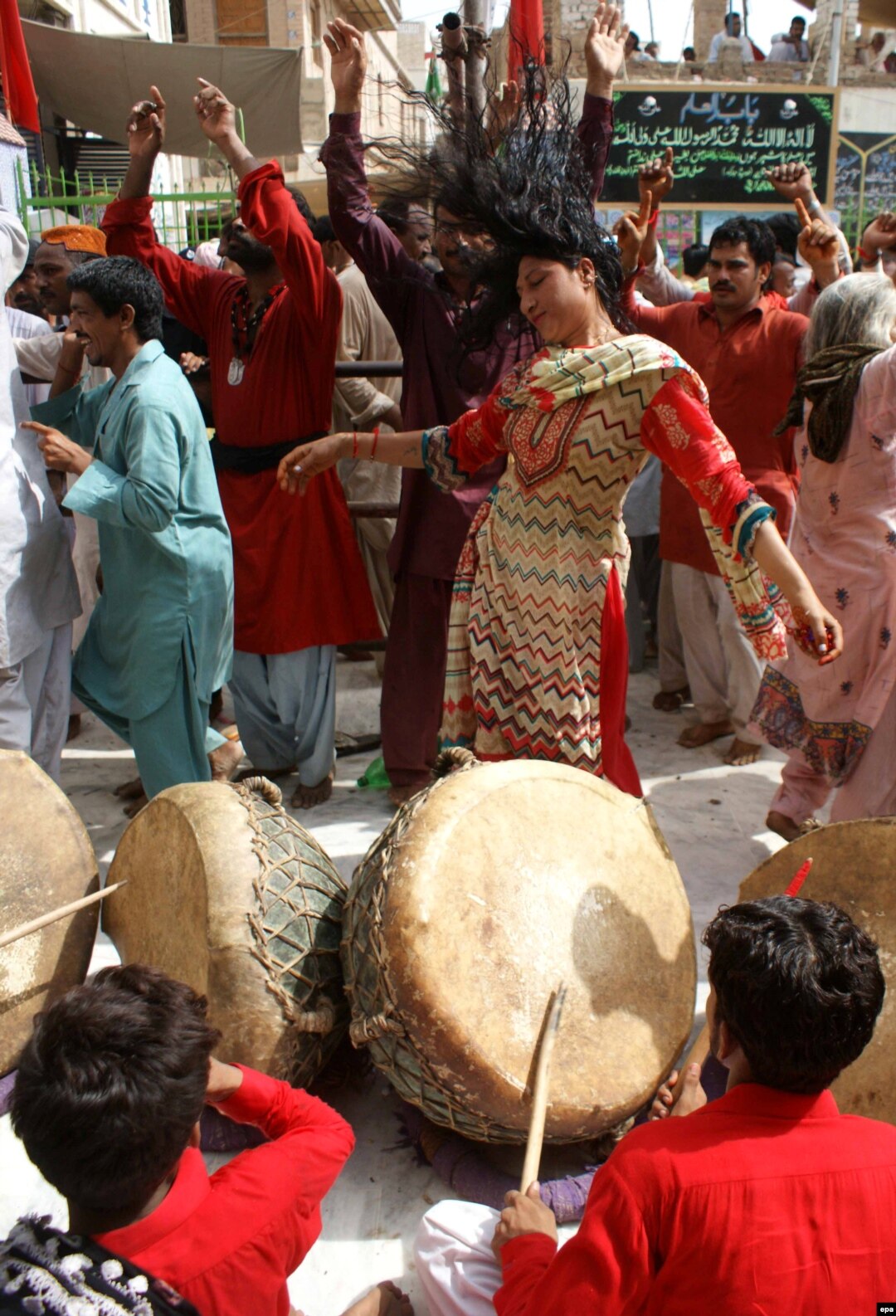Music, Dancing, And Tolerance -- Pakistan's Embattled Sufi Minority

The Lal Shahbaz Qalandar shrine, which was hit on February 16 by a suicide bomb attack. The shrine is a revered site for Sufis, a minority sect of Islam.

A Sufi devotee dances during annual celebrations at the shrine. Every year, the site is host to the world's largest Sufi festival.

A Sufi woman dances during the annual celebrations at the shrine in 2012. The devotees describe themselves as the "Anti-Taliban" and stand for "love, tolerance and the great infinity."
Sufis dance at the shrine in 2008. During the festival the air is heavy with drumbeats, chanting and cannabis smoke.
A devotee dancing to the beat of the drum at the Lal Shahbaz Qalandar shrine in 2013. The Huffington Post describes Sufism as a branch of Islam which "employs music, dance and spiritual recitation to awaken the God who Sufis say is asleep in the human heart."
Devotees reach out for sacred water inside the shrine in 2013. Sufism draws on some rituals of pre-Islamic traditions.
A woman devotee dances in a trance inside the shrine in 2013. Lal Shahbaz Qalandar, the Sufi saint interred here, is revered by both Sufi Muslims and Hindus.
A devotee's hand is pictured decorated with rings inside the shrine. The annual festival is a spectacular parade of colorful clothing and personal decorations.
The interior of the shrine in 2013. Sufism has come under increasing attacks in recent years by hard-line Islamists who believe Sufis are heretics.
A devotee dances during the annual festival at the Lal Shahbaz Qalandar Shrine in 2013. In November 2016, 45 people were killed in a bombing attack inside another Sufi shrine in southern Pakistan, and in June 2016, a revered Sufi musician was shot dead inside his car in Karachi, Pakistan.

